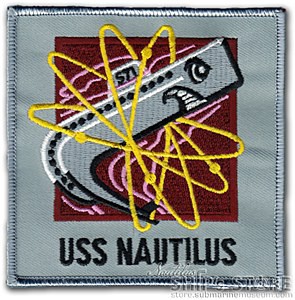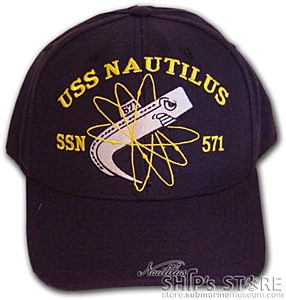Subtweeted
We’re being peeping Фом’d by Russia
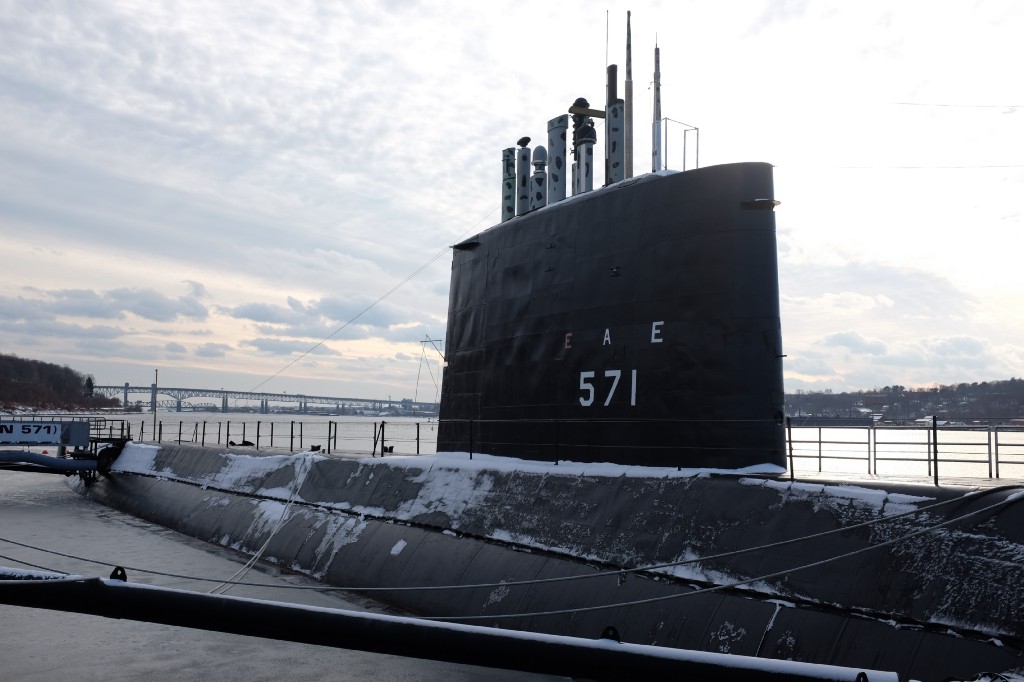
This morning a producer for Fox News’ Pentagon and State Department coverage tweeted that a Russian vessel was stopped 30 miles off the coast of Connecticut, loitering:
UPDATE: Russian spy ship now located 30 miles south of Groton, CT home to a US Navy submarine base. Russian ship “loitering,” US official
Those proper nouns move the needle an above-average amount for me recognition-wise because my mother grew up in Groton, Connecticut, so I know it’s a town that serves the naval base and Coast Guard academy in nearby New London. Her father was one of the engineers who designed the U.S.S. Nautilus (the world’s first nuclear-powered submarine) in the ’50s, so I know that the buzziest member of the base’s fleet is a vessel that’s been out of duty and docked in the Thames River as a museum since the early ’80s.
My dad actually texted me a pic last week while taking a walk by the Thames, and I thought nothing of it:
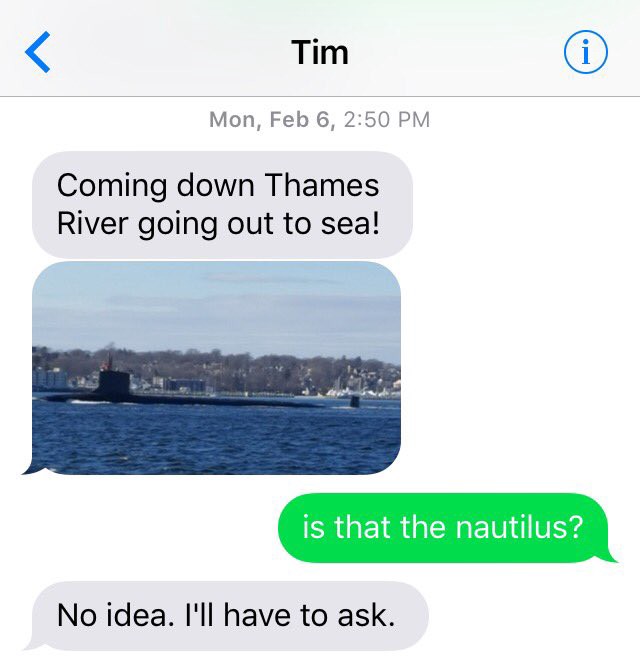
Even days later, when he followed up with an update, I just went, “Huh.”
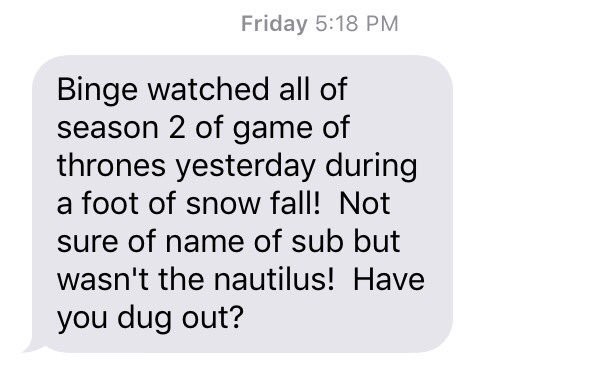
The image of the sub seems spooky now in retrospect. Were we sending out… ships for a reason? Is there… a great deal of military activity still taking place underwater?
Anecdotally, I’d say seeing a sub on the river is rare-ish — not “it never happens” rare, but “once in a blue moon” rare. Usually when I’d spot one I’d think, “Ah, they’ve gotta make sure everything’s still running,” like our nation’s submarine fleet is an old car at risk of not starting if we keep it parked in the driveway too long. And the way the government budgets for new subs suggests this is a fair assessment—all the wars I’ve grown up with have involved tanks and night vision footage of house raids, so knowing that the Nautilus once crossed the entire North Pole underwater seemed historical. We’re going to Mars, honey. We’re going to the desert. We can maintain nice subs, sure, but we won’t be innovating with them.
But today I’m worried about what kind of predator seems to be lurking with such startling proximity to my family, so suddenly I’m interested in nuclear submarines.
Here are some ideas:
- Torpedoing a nuclear submarine does not cause a nuclear explosion. This is where my brain immediately went because I am ignorant and love the arts, but apparently the reactor just sinks to the bottom of the ocean with the rest of the wreckage. Wherever it lands is ideally where it stays, because moving the reactor after the fact ends up being a lot worse for everyone radiation-wise than just letting it sit there underwater. 100% of the several sunken nuclear submarines currently at the bottom of the ocean are from Russia/the former U.S.S.R. or the United States.
- As recently as December, Russia was being a shiesty neighbor submarines-wise. If you were wondering who does still love submarines, the answer is Russia. According to England’s the Sun, Putin had sent warships to an area between Greenland, Iceland and the U.K. (known as the GIUK gap) which was historically used by the U.S.S.R. to escape Western spies. Back in December, journalists were speculating that the submarine lurking there was an attempt to exploit “a strategic ‘choke point’ in the North Atlantic used by Soviet ships during the Cold War.” One think tank expert warned about “the dangers of Putin’s forces obtaining the ‘acoustic signature’ from one of the Vanguard warships.” Or, in other words, that sitting in a sneaky location in international waters might give Russia a nice vantage point on Britain’s resting Navy from which to observe how their ships communicate with one another. “If Russia were able to obtain a recording of the [acoustic] signature, it would have serious implications for the UK’s nuclear deterrent — Russia would be able to track Vanguards and potentially sink them before they could launch their missiles.” Also not insignificant: In October, the British Navy reportedly tracked up to three Russian subs traveling through the Irish Sea on their way to Syria. :)
- According to the New London Day, Groton is a strategic naval location for the access it provides to South Asia. Sure, Connecticut grants you access to the Atlantic Ocean and everything on the other side of it, but apparently if our Navy goes under the North Pole from there, the ships could reach the South Asian theater quicker than they would if they left from our naval base in San Diego. The argument goes back and forth because of ice factors, but it seems like a reasonable route option to have in our belts regardless of whether or not it actually ends up being faster. There’s a hangup, though. To use that alternate route, our ships would have to pass through the Bering Strait between Russia and Alaska. Another choke point. Hm.
- They’re in international waters, so what they’re doing isn’t illegal, just weird. Our Navy would like to pass along that they’re watching this situation “like a hawk.”
- There are now reports of an accompanying spy boat, which seems decidedly less sneaky and more “lol fuck you.” Connecticut Senator Chris Murphy tweeted, “Russia is acting like it has a permission slip to expand influence, test limits of reach. Questions are obvious: does it, and if so, why?” Some reasonable queries!
So the gist is: we’re getting spied on. But we’re getting spied on by a spy who isn’t too worried about hiding, because he kind of wants us to know that he’s spying. We’re being peeping Tom’d. And if procedural crime dramas have conditioned me to expect anything from a perp who wants you to know he’s watching, it’s that he’s going to get off on everyone making a big stink about how bad he is for ignoring a boundary. Yay!
Before a whirlpool forms and drags me to the bottom of the sea, I’ll leave you with one non-terrifying fact. During the time of the Nautilus’ launch, America was proud, and Disney’s art department designed a patch for the ship’s crew to wear on their uniforms. It looked like this:
